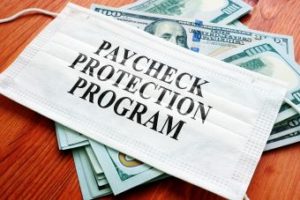New elements of the Paycheck Protection Program Flexibility Act passed on 6/5/2020 reflected in new application

On June 5, 2020, the President signed into law the Paycheck Protection Program Flexibility Act, which introduced significant changes to the duration of the ‘covered period’ following the disbursement of a PPP loan from 8 to 24 weeks, and to the loan terms themselves from two years to five. As a result, the application process for forgiveness of the loan itself, a feature of the original Paycheck Protection Program of the CARES act, had to be modified.
The information contained here is a summary of the those changes and the different application methods that can be selected by a PPP Borrower. These revisions, which were released by the SBA on 6/16/2020, are outlined below:
SBA PPP Loan Forgiveness Application Form 3508EZ
Instructions & Application
There are 3 scenarios in which the Form EZ may be used:
1. The Borrower is a self-employed individual, independent contractor, or sole proprietor who had no employees at the time of the PPP loan application and whose loan amount was not based on any employee salaries
2. The Borrower did not reduce annual salary or hourly wages of any employee (that did not receive, during any single period during 2019, wages or salary at an annualized rate of pay in an amount more than $100,000) by more than 25% during the Covered Period or the Alternative Payroll Covered Period compared to Q1 2020
AND
The Borrower did not reduce the number of employees or the average paid hours of employees between 1/1/20 and the end of the Covered Period (ignoring certain FTE reductions due to approved exceptions)
3. The Borrower did not reduce annual salary or hourly wages of any employee (that did not receive, during any single period during 2019, wages or salary at an annualized rate of pay in an amount more than $100,000) by more than 25% during the Covered Period or the Alternative Payroll Covered Period compared to Q1 2020
AND
The Borrower was unable to operate during the Covered Period at the same level of business activity as before 2/15/20 due to compliance with requirements established or guidance issued between 3/1/20 and 12/31/20 by certain governmental agencies related to COVID–19
Note: Documentation (by employee) is still required showing that annual salaries or hourly wages were not reduced by more than 25% during the Covered Period or the Alternative Payroll Covered Period relative to Q1 2020, as well as documentation supporting the applicable FTE reduction exemption selected
Loan Forgiveness Application Revised June 16, 2020
Instructions & Application
- If the Form EZ cannot be used, the full application must be used which is almost identical to the 5/15/20 version of the application
- The main difference from the original application is that this version’s Schedule A more clearly explains the FTE reduction exemptions and adds in the Safe Harbor due to being unable to operate during the Covered Period at the same level of business activity as before 2/15/20 due to compliance with requirements established or guidance issued between 3/1/20 and 12/31/20 by certain governmental agencies related to COVID–19
Interim Final Rule 3 and 6
Revisions
Revises references to previous IFR’s based on the PPP Flexibility Act
Key items being:
- changing of the covered period from 8 weeks to 24 weeks (unless a borrower’s loan was in place prior to 6/5/20 in which case the borrower may elect an 8 week covered period)
- changing maturity to 5 years (borrowers with loans in place prior to 6/5/20 may mutually agree with lenders to change maturity from 2 years to 5 years)
- changing reference from at least 75% of loan proceeds being used for payroll costs to at least 60% being used for payroll costs (including the amount of any refinanced EIDL)
- raising the maximum amount of cash compensation portion of payroll costs from $15,385 to $46,154 per individual (in the case of a 24 week covered period)
- a lengthy discussion on the rationale for limiting owner’s compensation costs to the lesser of 2.5 months of 2019 net profit or $20,833 ($100,000 / 12 x 2.5) for a 24 week covered period (to avoid windfalls to owners)
- specifying the exclusion of any FFCRA wages for which a credit was claimed from owners compensation
Now that the covered period has been extended to 24 weeks and the Safe Harbors extended to 12/31/20, it should be more straightforward to obtain forgiveness based almost entirely, if not entirely, on payroll costs thereby avoiding the record keeping involved in including nonpayroll costs. Also, hopefully there will not be a need for including the “extra” pay cycle that could technically be used based on the “paid or incurred” language in the definition of payroll costs.
 TOP
TOP